My featured artist today is the lesser-known British painter John Downton who was born on March 27th, 1906 in the Kent town of Erith, some twenty kilometres south-east of London. He was the youngest of three children of Albert Victor and Flora Edith Downton (née Mitchell). John had two older sisters, Hilda and Mary both of whom had intended to study medicine but their plans were thwarted by family circumstances and health reasons.
At the age of four John attended the Erith Convent where he was a pupil for the next four years. In 1914 he transferred to the Erith Grammar School. It was around this time that John developed a love for music. His father played the flute and the piano and was a prominent member of the local church choir. John’s uncle, Hedley, gave John a violin and during the following years John became an important member of the school orchestra. The other great love of the teenager was his desire to read, particularly books by ancient philosophers and other “serious” works of English literature.
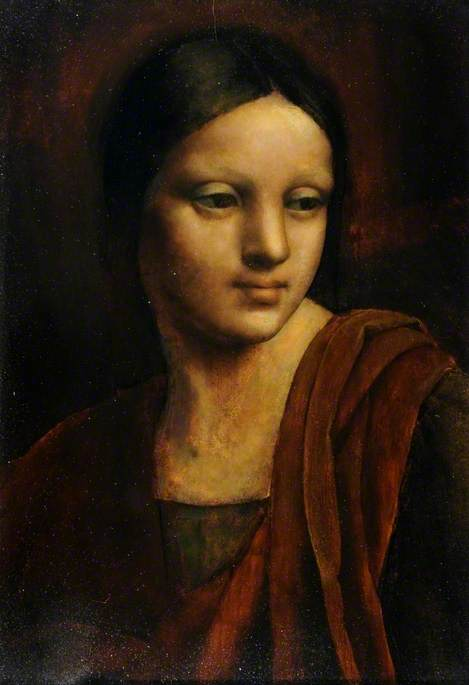
Apart from his music and books, John had an overriding passion for art and even built a summer house/studio in the family garden where he did his painting. When he was seventeen the school entered his pencil sketch, Biplanes: A Study, into the Royal Drawing Society at the Guildhall, London and he was awarded a Silver Medal. As a teenager he was fascinated by all things military and penned many sketches of war machines and yet, later in life he became a pacifist.
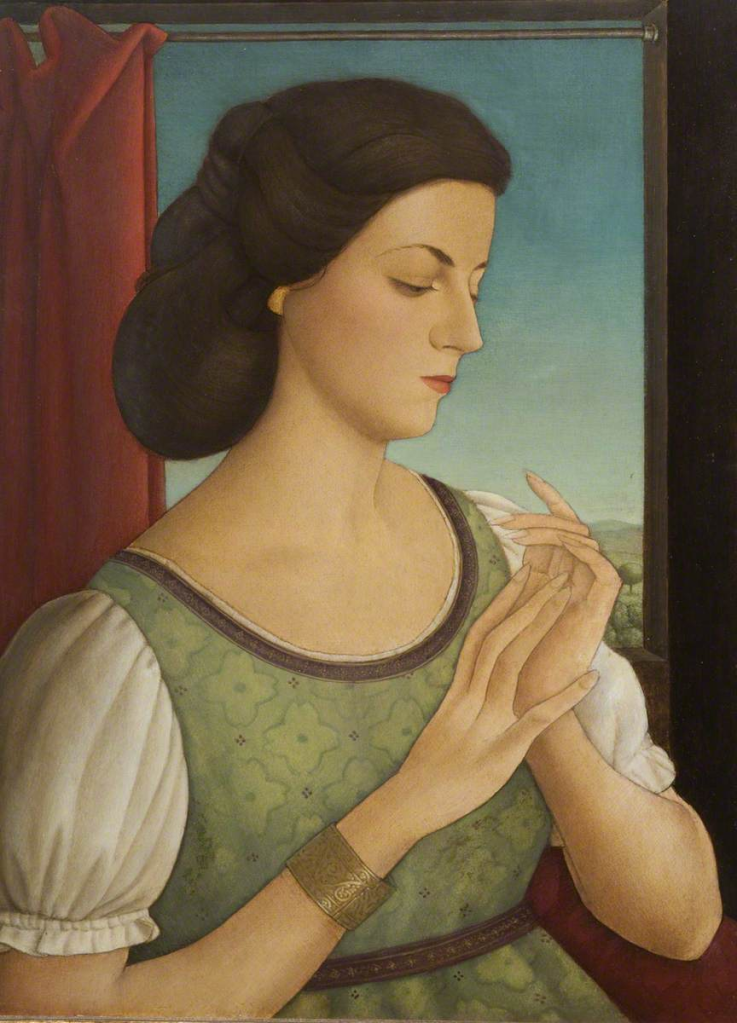
In 1922, when he was sixteen years old, his mother noticed an advert in The Times which stated that a Professor Gaugot, who was a lecturer at the Sorbonne, was willing to teach an English boy to speak French and so young John Downton headed to Paris where he stayed with the Gaugot family.
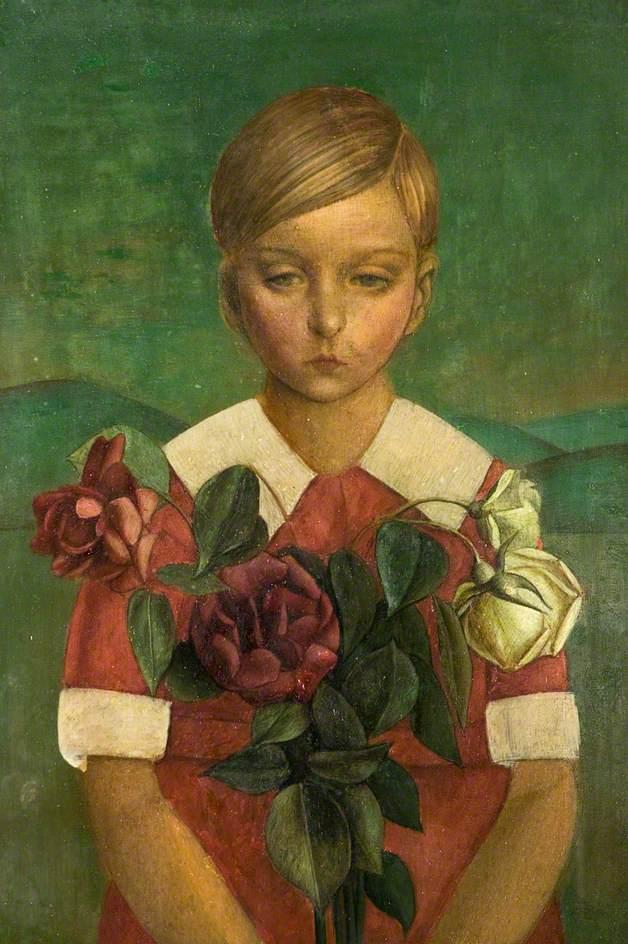
A year later in 1923 John accompanied his two sisters to Italy where they visited Venice and the Northern Italian Lakes as well as the Swiss towns of Lucerne and Lugano. This was the start of John’s love affair with travel. His favourite destinations were Northern Italy and Switzerland.
Having completed his schooling John was accepted into Queen’s College, Cambridge. Initially he took Part 1 of the English Tripos and in 1927 was placed into the Second Class but the following year he decided to abandon English and instead enrolled in the History of Art course and once completed, he received a First Class degree. During his three years at the university John immersed himself in their musical activities.
In the Autumn of 1928, having completed his three-year degree course, John Downton enrolled at the Slade School of Art which at the time was presided over by Henry Tonks, a British surgeon and later draughtsman and painter of figure subjects, chiefly interiors, and a caricaturist who was Slade Professor of Fine Art from 1918 to 1930. John, like many of the Old Masters of the past, preferred the medium of tempera but the Slade tutors wanted him to change his favoured painting medium and embrace a more modern style of painting. There was to be no common ground and so on May 21st 1929, John resigned. In a forward to John Downton’s 1937 book, The Death of Art, an art critic and author wrote about Downton’s falling out of love with the Slade and the Academy’s thoughts on art. He wrote:
“…A certain kind of rather drably coloured, sober urban realism was the style in favour. Not for Downton though: he had pretty certainly made up his mind what he wanted to do and what sort of painter he wanted to be well before he arrived at the Slade and it has much more to do with the legacy of Piero della Francesca than that of Sickert and Cezanne…”
Downton’s art was a return to the art of the early Renaissance.
In 1930 John Downton and his sister set off on an European trip. They based themselves in the Côte d’Azur town of Menton and from there they took day trips out to the Italian Riviera towns of Ventimiglia and Genoa. Much longer trips were taken by the pair when they visited Milan and Lugano as well as his beloved Italian Lakes.
Around 1930, John bought Park Cottage in the Kent village of Sundridge, some twenty miles, south-east of London. He spent much of his time renovating the property and buying antique furniture at auction to furnish the rooms. After two years living there, he realised it was too small for him and his artwork and so he moved out and rented the cottage to a fellow artist, Vincent New.
In April 1932 John Downton was awarded his M.A. and, as if to celebrate the successful completion of his studies, he took a trip to Tunis and returned via Naples, where he remained for a few months. On arriving back to England John searched for a new home and eventually purchased a property with a north-facing conservatory in which he could paint. The property was in Observatory Gardens, in the London borough of Kensington.
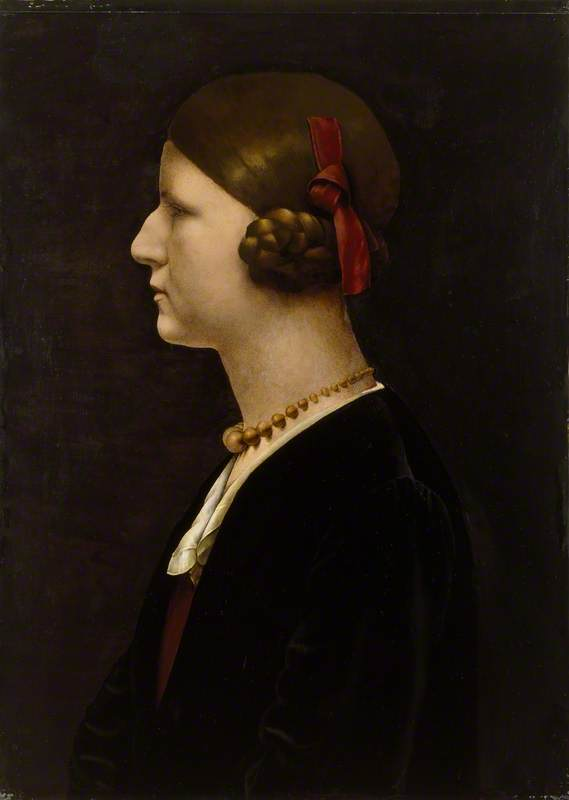
Around 1935, John Downton completed a poignant in memoriam portrait of his cousin Frances Witts. She had died of pneumonia aged just twenty-six. He used a family photograph for this work.
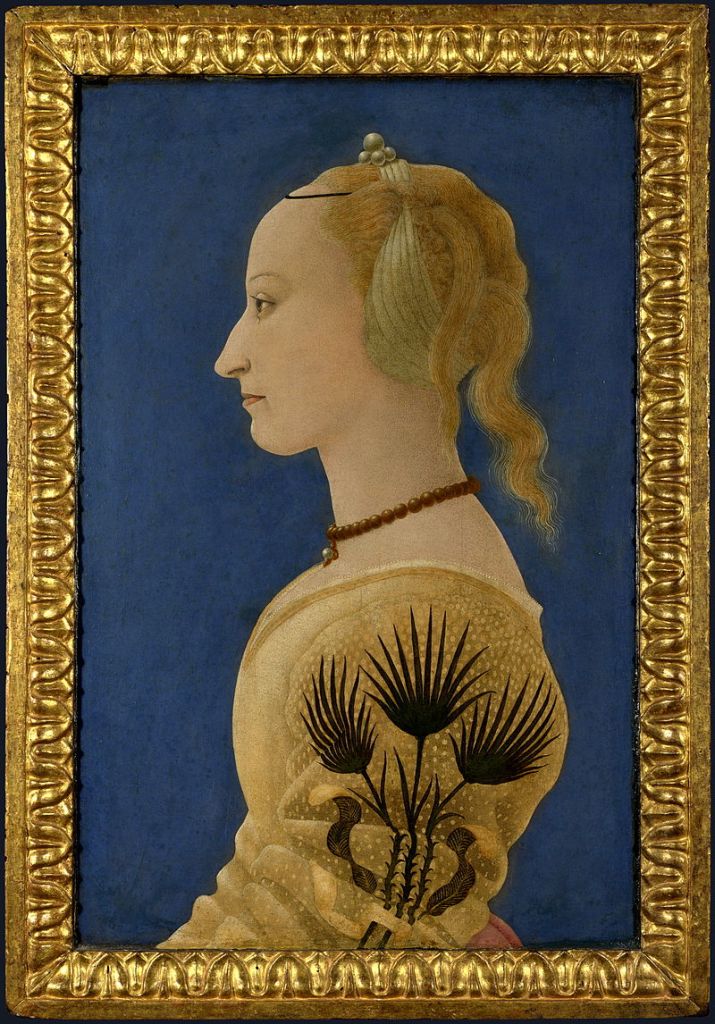
Downton was influenced by profile portraits executed by Florentine painters such as Baldovinetti’s 1465 work entitled Portrait of a Lady in Yellow but art historians believe this portrait of his cousin was influenced by the Milanese painter, Ambrogio’ de Predis and his c.1490 work, Beatrice d’Este, which was once attributed to Leonardo da Vinci.
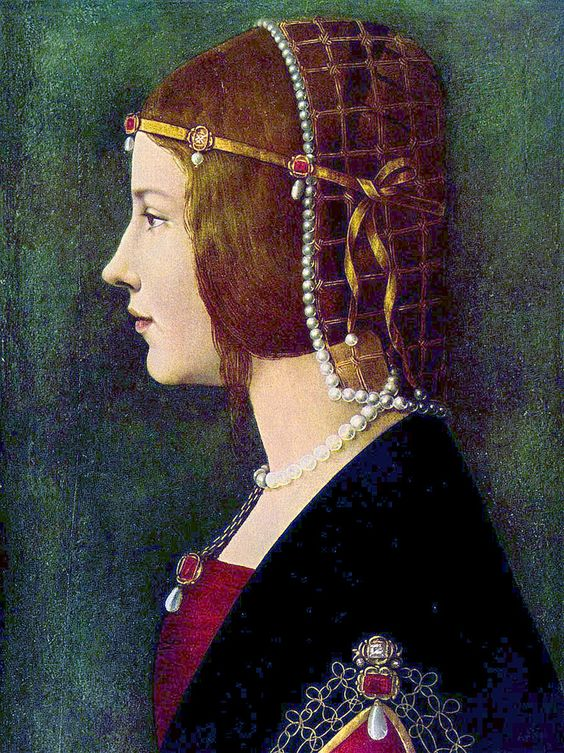
Downton’s memorial portrait has a dark and rich tonal quality and he has based it on a conservative portrait of the past and has accomplished an image that is both solemn and inspiring. The woman in Downton’s portrait, like the Italian females in the portraits mentioned earlier, includes a necklace with diminishing size of beads whilst her hair is similarly geometric but in Frances Witts’ case it is gathered at the sides rather than at the back of the head.
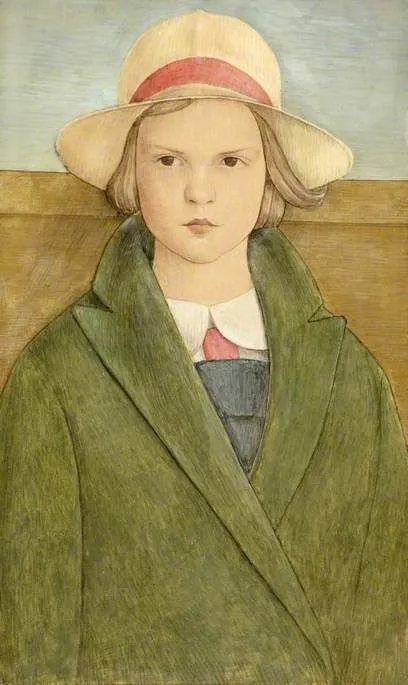
Between 1936 and 1940 John Downton exhibited work at the Royal Academy Summer Exhibition. His two submissions in 1936, which were considered to be his masterpieces, were The Battle and and Nora Russell. The latter painting was executed in egg tempera and, despite it being a simple depiction of a young schoolgirl, it is evocative in the way it reminds us of the spirit of Quattrocento female portraiture, that is to say, female portraiture in fifteenth-century Italy, which portrayed womanly perfection as established in Catholic doctrine, illustrating the special social roles that upper-class women fulfilled at the time.
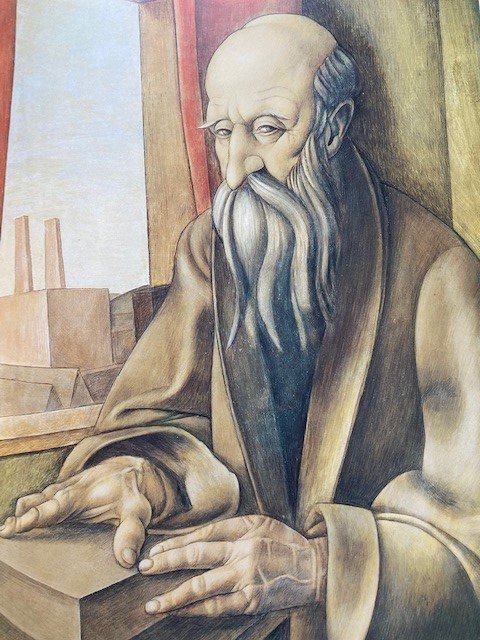
The title, The Battle, the second of his submitted painting to the 1936 Royal Academy Summer Exhibition, is to do with conflict but not a battlefield scene, as you may have expected. It is all about the battle between modern industrialisation and the ideal of Renaissance humanism, which was a revival in the study of classical antiquity, at first in Italy and then spreading across Western Europe in the 14th, 15th, and 16th centuries, a cultural legacy, literary legacy, and moral philosophy of classical antiquity.
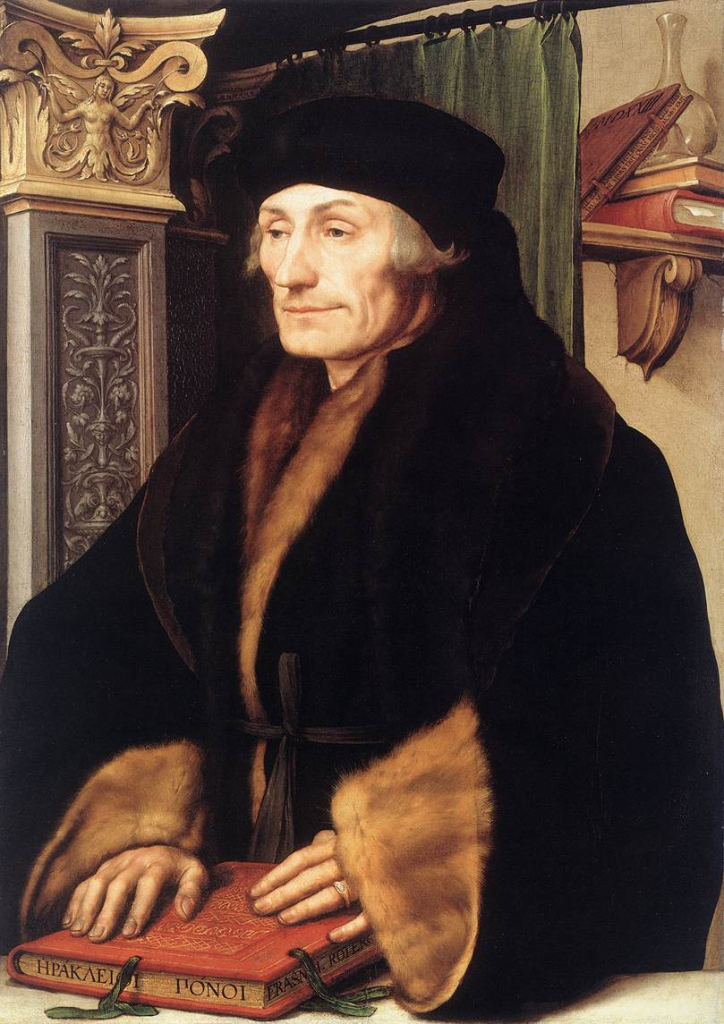
The figure and its stance in the painting is based upon Holbein’s 1523 work, Erasmus of Rotterdam. Erasmus was the leading humanist at the time. Both works accentuate the hands of the sitter. In the Louvre collection there are studies of hands made by Holbein as preliminaries for his painting. In Downton’s painting we see through the window an abstract depiction of a modern factory.
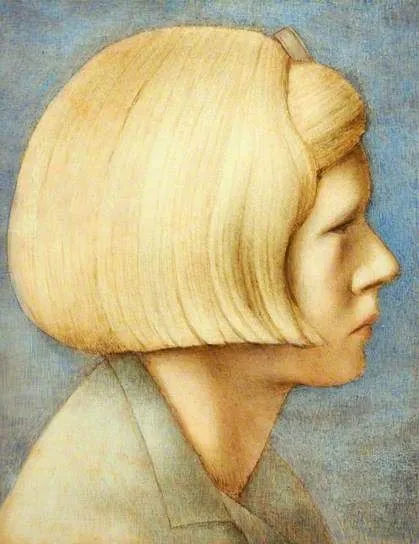
John Downton was always on the move and made many more house relocations and in August 1937 he took up residence in Cambridge. That year he submitted his work entitled Joan Harris to the Royal Academy Summer Exhibition where it was subsequently chosen to be shown in The Prominent Living Artists Exhibition which was staged at the Russell-Cotes Museum in Bournemouth. Joan Harris was the daughter of John Downton’s Cambridge neighbour. From a letter she wrote him during the sittings for the portrait we can gather that Downton completed more than just this one portrait of her. She wrote:
“…I hope you will finish the picture soon; but if you ever want me to come and sit for you again, just let me know and I will come any time that I am able.
When you have finished the picture I hope I will be able to see it and if you get the first picture back in Cambridge I would like to see it, and I know Mummy and Daddy would love to see it as they never saw it when it was completed…”

Downton’s 1938 submission to the RA Summer Show was Portrait of a Girl which unusually for Downton depicted the model against a landscape background giving the impression that it was a plein air portrait. There is a definite resemblance to the style of one of my favourite portrait artists, Gerald Brockhurst.
A strange looking portrait going under the title Portrait of a Woman was completed by John Downton in 1955.
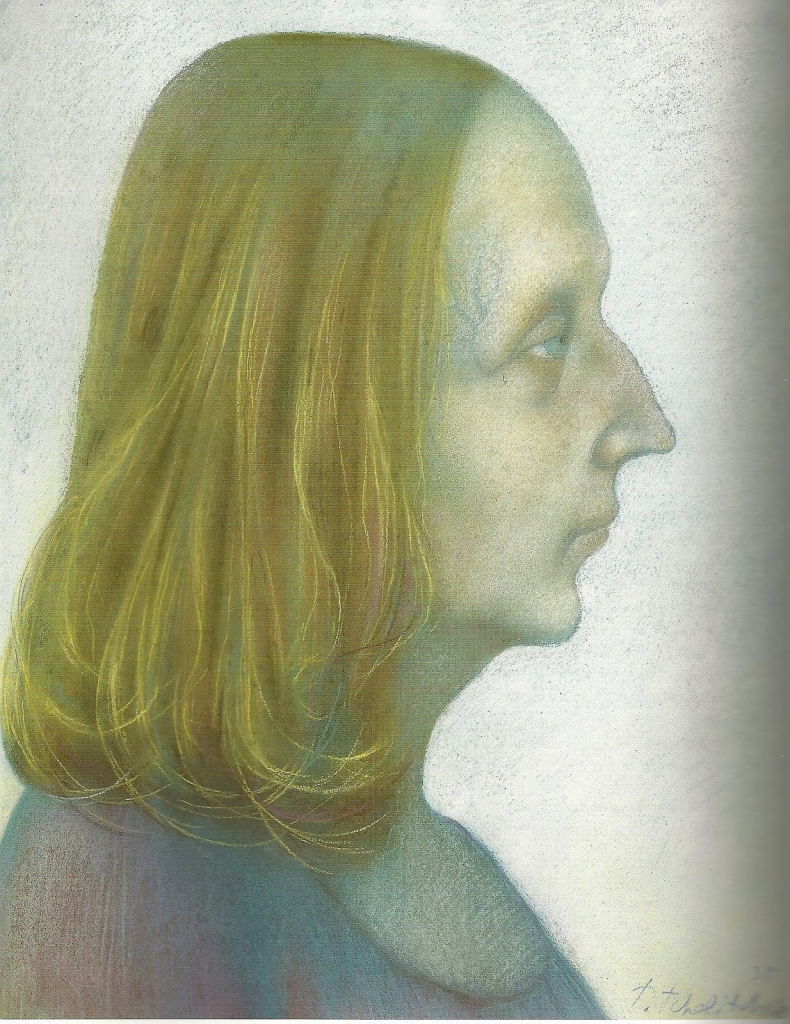
It is thought that the depiction was loosely based on the Polish painter, Pavel Tchelitchew’s portrait of his good friend Edith Sitwell in 1935.
In 1938, now living in Cambridge, Downton was having to cope with the rejection by Faber & Faber of his manuscript, The Death of Art, but which was published years later. In 1940 Downton submitted three paintings to the Royal Academy Summer Exhibition, Eve, A Girl Conducting, and A Child. His painting entitled Girl Conducting is all about his depiction of the girl’s hands and it is such a facet in many of his works. The finished product did not come easily for Downton, who made numerous sketches of hands until he had perfected them. Many of the depictions were influenced by Renaissance paintings. The three paintings Downton submitted to the RA that year were to be the last of his offerings to that establishment.
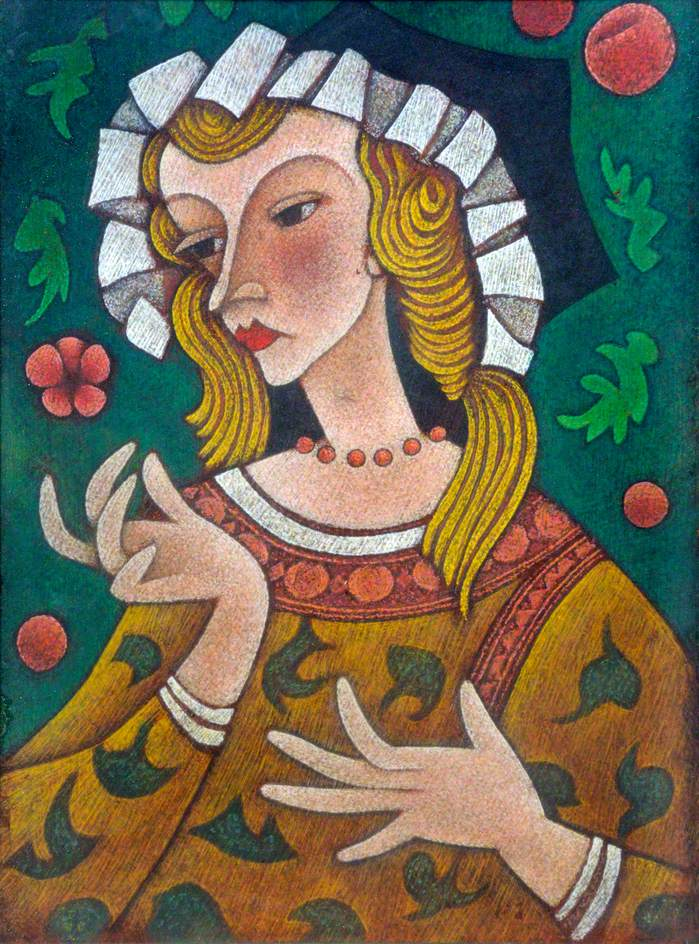
So why did Downton stop exhibiting his work at the RA ? In the foreword to Downton’s book The Death of Art, which his sister, Hilda, finally had published in 1995, the writer and critic John Russell Taylor explained:
“…He seems to have felt himself marginalised in a world increasingly unsympathetic to everything he stood for. In 1939 he moved to Florence in an attempt to escape the materialist twentieth century, but then almost immediately had to return to Britain at the outbreak of war. The war itself was even more of an alienating factor, a total outrage to his dearly held pacifist principles. And a general feeling that the mainstream of British Art was moving further and further away from his own ideals, first into luxuriant Romanticism and then into freeform abstraction, caused him to withdraw altogether from exhibiting his own art after 1940…”
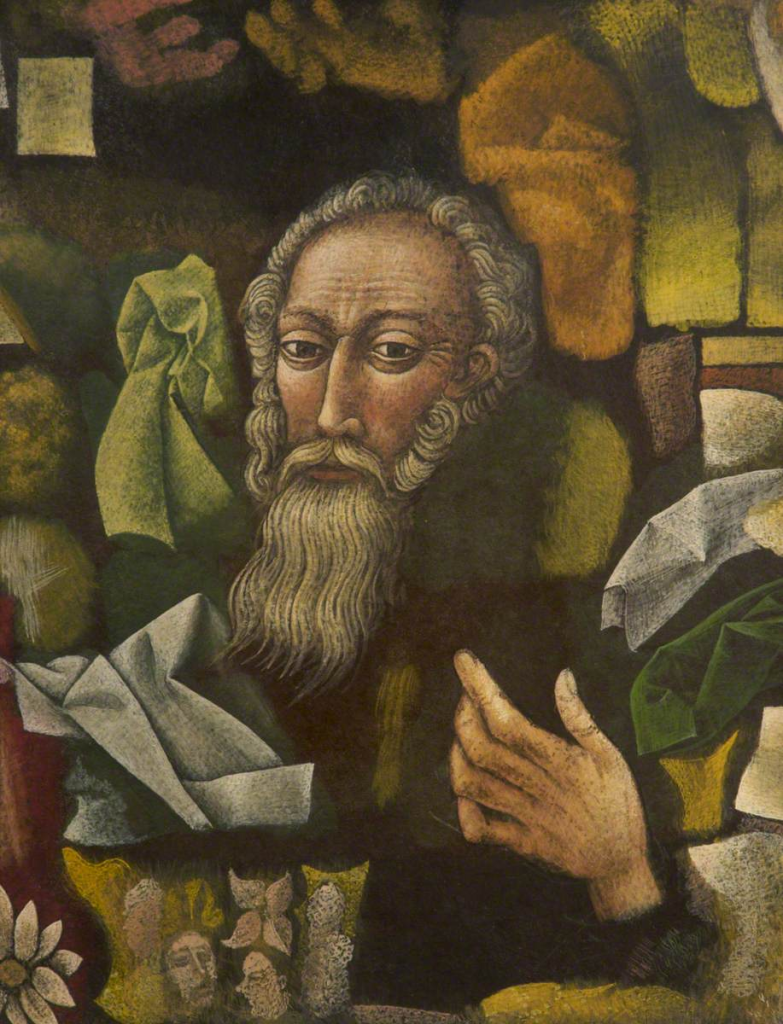
Now back home in England with the war waging in Europe, John Downton received his conscript papers. Downton had always been a pacifist and went before the Review Board to argue his case for not fighting. The Board accepted that he was a genuine conscientious objector and so, in September 1940, he was put to work on a farm near Ludlow. That same year his two sisters moved north to Pitlochry in Scotland and later Downton moved north to be with them and work on the land of the local farmer.
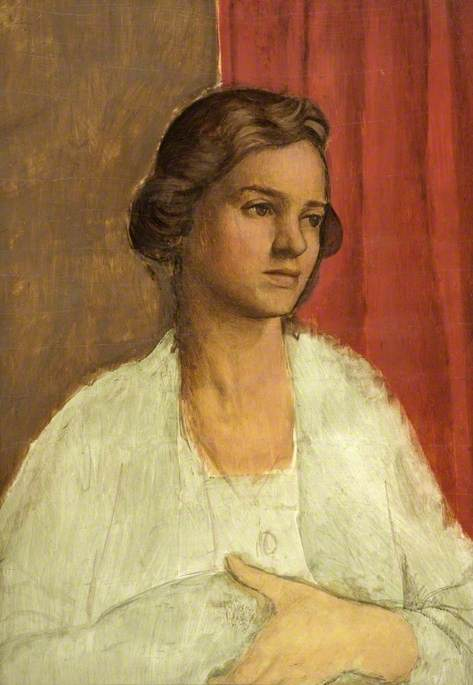
When the war ended Downton moved south and took up residence in the Kent town of Sevenoaks. He remained there for two years but then returned to Cambridge where he stayed until 1964 but when his lease ran out on the property he was renting in 1971 he moved back to Sevenoaks and rented a large ground floor flat with a cellar, close to where his sisters, Hilda and Mary were then living. Mary became very ill with asthma in 1986 and died. In December 1990 a water pipe burst in the cellar and caused a flood which partly destroyed some of his books and manuscripts he had stored in the room. He struggled to save and move the heavy boxes of books and this exertion damaged his heart. He was confined to hospital for two weeks and on discharge went to live with his sister, Hilda, who looked after him during his final days. John Downton died on July 31st 1991, aged 85.
John never married but was in no way a recluse as his time was taken up with his painting and his love of music. He had many friends who valued his company. His sister, Hilda died in 2006, aged 104.


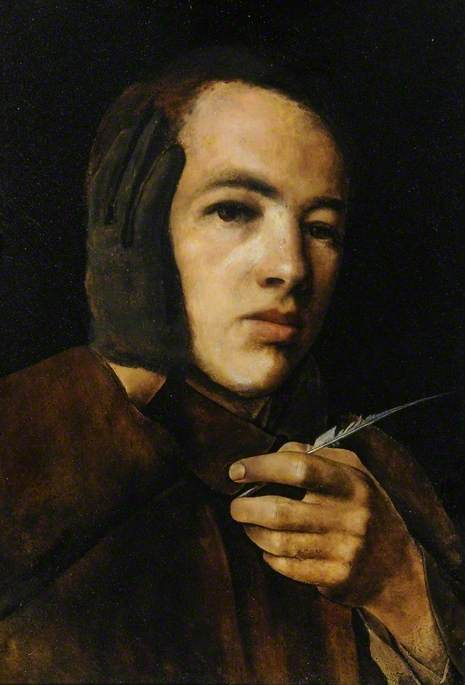
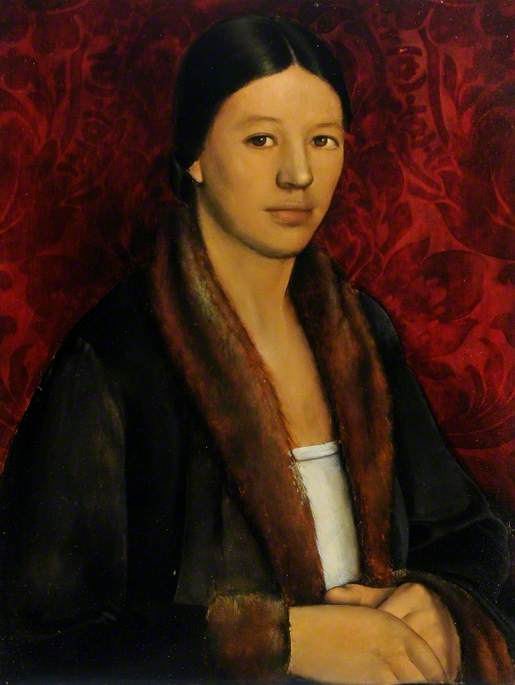
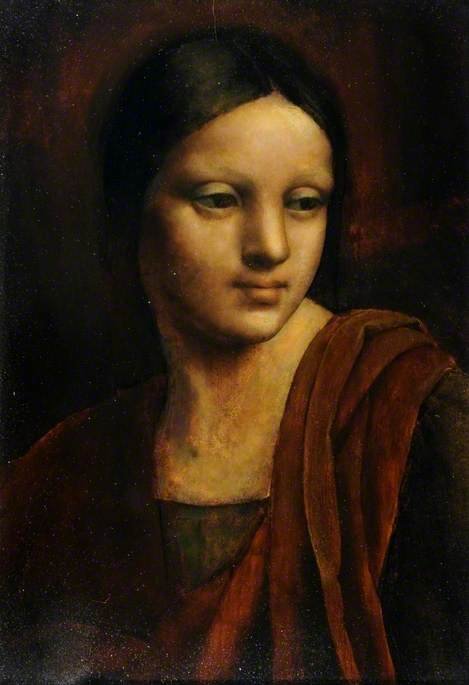
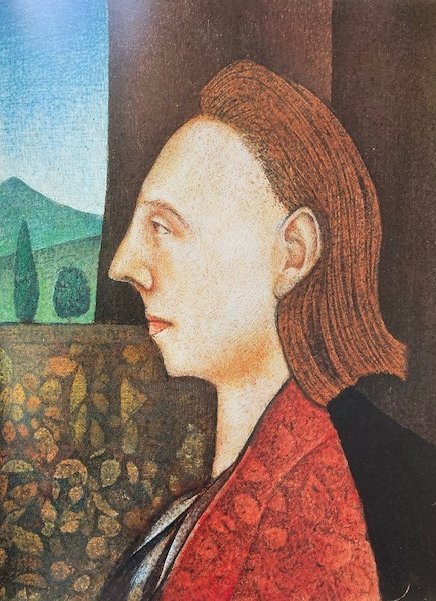
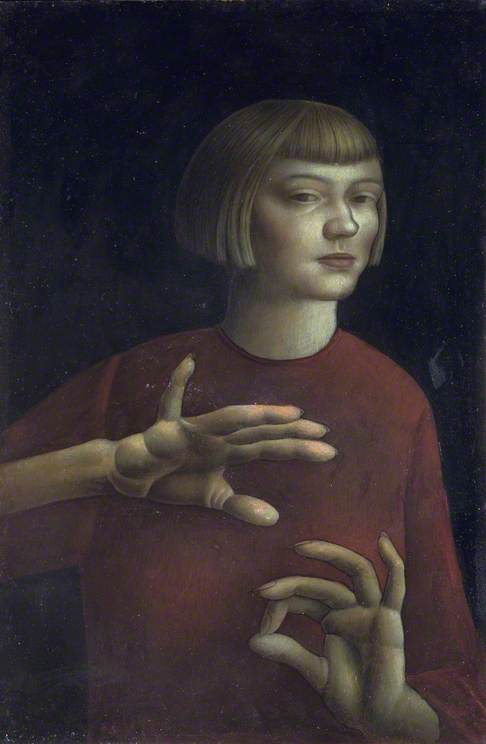




More Stories
Free Sheet Music – Earn Money Online by Composing Sheet Music Scores
8 Benefits of Listening to Music
Asian Artwork Through the Eyes of Janet Tava – Handbook Woodworkers and Weavers Gold Medallion Tapestry